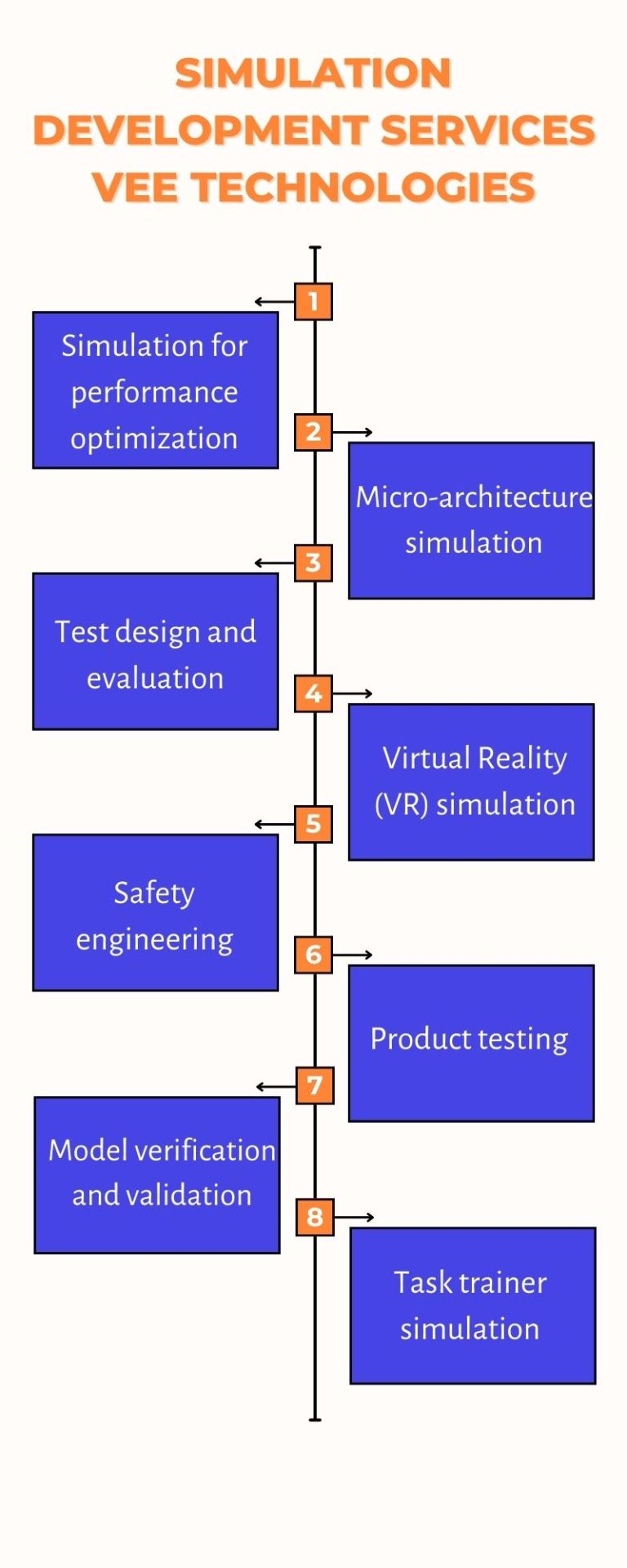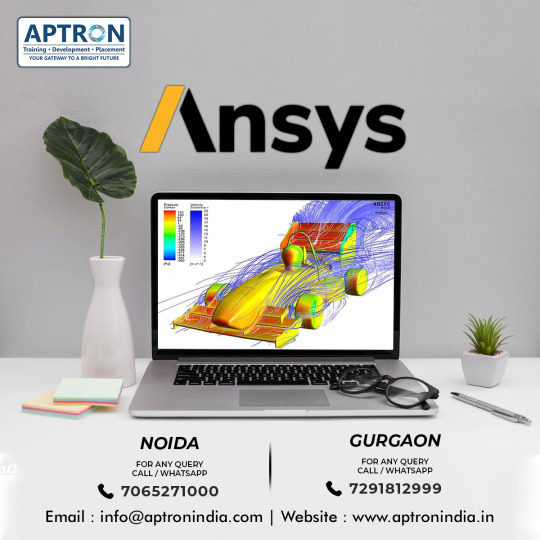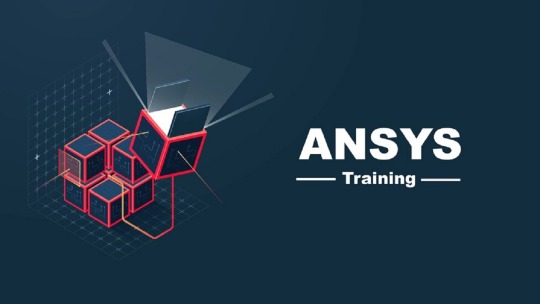#EngineeringSimulations
Explore tagged Tumblr posts
Text
youtube
In Episode 7 of our Basics of Electric Vehicle Simulations using Ansys series, we dive deeper into heat transfer modeling by exploring internal heat generation within EV batteries! 🔥📊 Learn to calculate temperature distributions when there’s heat generation across a 1D domain, a crucial concept for managing battery temperatures and improving EV efficiency. This video covers the step-by-step derivation of an energy balance equation with internal heat generation and demonstrates how to calculate steady-state temperature using an Excel-based calculator. We also discuss when analytical methods may fall short and how numerical methods like the finite difference method (FDM) provide solutions for complex geometries.
#ElectricVehicles#ElectricVehicleSimulations#Ansys#EVSimulations#BatteryThermalManagement#LearnAnsys#EngineeringSimulations#Engineering#EngineeringCourses#ElectricalEngineer#ElectronicsEngineer#JobsforEngineers#CertificationCourse#FreeCourse#Youtube
0 notes
Text
Vee Technologies' Simulation Development Services

At Vee Technologies, They provide simulation development services for both technical and non-technical learning requirements. Our high-quality, lightweight, and instant-loading videos make it easy for your target audience to learn on the go.
Explore More: https://www.veetechnologies.com/industries/animation-services/simulation-development.htm
#SimulationDevelopment#Simulations#3DModeling#VirtualSimulation#SimulationSoftware#TrainingSimulations#ModelingAndSimulation#DataVisualization#SimulationServices#InteractiveSimulations#SimulationDesign#EngineeringSimulations#SimulationTechnology
0 notes
Text
Vee Technologies' Simulation Development Services

At Vee Technologies, They provide simulation development services for both technical and non-technical learning requirements. Our high-quality, lightweight, and instant-loading videos make it easy for your target audience to learn on the go.
Explore More: https://www.veetechnologies.com/industries/animation-services/simulation-development.htm
#SimulationDevelopment#Simulations#3DModeling#VirtualSimulation#SimulationSoftware#TrainingSimulations#ModelingAndSimulation#DataVisualization#SimulationServices#InteractiveSimulations#SimulationDesign#EngineeringSimulations#SimulationTechnology#veetechnologies
0 notes
Text

Enrolling in the Ansys Institute in Noida at APTRON Solutions is straightforward. Visit their website or contact their admission office to get detailed information on course schedules. For engineers looking to enhance their simulation skills and advance their careers, the Ansys training program at APTRON Solutions in Noida is an excellent choice. With a robust curriculum, experienced faculty, and a focus on practical learning, APTRON Solutions prepares you to meet the challenges of the engineering industry head-on. Enroll today to take the first step towards mastering Ansys and boosting your professional growth.
#AnsysTraining#EngineeringSimulations#APTRONSolutions#NoidaTechEducation#LearnAnsys#SimulationSkills#EngineeringSoftware#ProfessionalDevelopment#IndustryInsights#HandsOnLearning
0 notes
Link
#aerodynamicsimulation#artificialintelligence#CFD#computationalfluiddynamics#engineeringsimulation#foundationmodel#Honda#IEA#JobyAviation#LuminaryCloud#LuminaryCloudAeroSUV#LuminaryCloudShift-SUVmodel#nTop#Nvidia#physicsAI#PiperAircraft#RuneAero#SAE#SAEWCX#Sceye#SutterHillVentures#SUVaerodynamics#TechnischeUniversitätMünchen
0 notes
Text
Simulink System Modeling: A Comprehensive Guide to Model-Based Design

In the realm of modern engineering, the complexity of systems has grown exponentially, necessitating advanced tools and methodologies to design, analyze, and implement these systems efficiently. One such powerful approach is Model-Based Design (MBD), prominently facilitated by tools like MATLAB and Simulink. This article delves into the intricacies of Simulink system modeling, exploring its significance, applications, and the advantages it offers in the engineering landscape.
Understanding Model-Based Design
Model-Based Design is a systematic approach that utilizes mathematical models as the foundation for designing and verifying complex systems. By creating executable specifications, engineers can simulate and validate system behavior early in the development process, leading to more efficient workflows and reduced time-to-market. This methodology is particularly beneficial in handling the multifaceted nature of modern systems, where traditional design approaches may fall short.
The Role of Simulink in System Modeling
Simulink, developed by MathWorks, is a graphical environment for modeling, simulating, and analyzing multidomain dynamic systems. It extends MATLAB's capabilities by providing a platform where engineers can construct block diagrams to represent system components and their interactions. This visual representation simplifies the understanding of complex systems and facilitates seamless integration across various domains.
Key Features of Simulink
Graphical User Interface (GUI): Simulink's intuitive GUI allows users to drag and drop blocks, connecting them to form a comprehensive system model. This approach enhances accessibility, enabling engineers to focus on design logic rather than syntax.
Multidomain Modeling: Simulink supports the integration of mechanical, electrical, hydraulic, and other physical domains within a single model. This capability is crucial for accurately representing systems that encompass multiple engineering disciplines.
Simulation Capabilities: With Simulink, engineers can perform time-domain simulations to observe system behavior under various conditions. This feature aids in identifying potential issues and optimizing performance before physical prototypes are developed.
Code Generation: Simulink facilitates automatic code generation for embedded systems, streamlining the transition from model to implementation. This functionality reduces manual coding errors and accelerates the development process.
Extensive Libraries: Simulink offers a vast array of pre-built blocks and toolboxes, catering to different applications such as control systems, signal processing, and communications. These resources expedite model development and ensure consistency across projects.
Applications of Simulink System Modeling
Simulink's versatility makes it applicable across various industries and engineering domains:
Automotive Industry: Simulink is extensively used for designing and testing control systems in vehicles, including engine management, transmission control, and advanced driver-assistance systems (ADAS). By simulating these systems, manufacturers can enhance safety and performance while reducing development costs.
Aerospace Sector: In aerospace engineering, Simulink aids in modeling flight dynamics, control systems, and avionics. The ability to simulate different flight scenarios ensures that systems meet stringent safety and performance standards.
Industrial Automation: Simulink facilitates the development of control algorithms for industrial machinery and processes. By modeling these systems, engineers can optimize efficiency, reduce downtime, and improve overall productivity.
Telecommunications: Simulink's capabilities extend to modeling and simulating communication systems, including signal processing and network protocols. This application is vital for designing robust and efficient communication infrastructures.
Medical Devices: In the medical field, Simulink assists in developing control systems for medical devices, ensuring they operate safely and effectively. Simulation allows for rigorous testing under various conditions, which is crucial for patient safety.
Advantages of Using Simulink for System Modeling
Early Detection of Issues: By simulating system behavior early in the design process, engineers can identify and address potential problems before they escalate, reducing costly revisions later.
Cost Efficiency: Simulink reduces the need for multiple physical prototypes by enabling virtual testing and validation, leading to significant cost savings in development.
Improved Collaboration: The visual nature of Simulink models facilitates better communication among multidisciplinary teams, ensuring that all stakeholders have a clear understanding of the system design.
Scalability: Simulink models can be scaled from simple components to complex systems, providing flexibility to adapt to projects of varying sizes and complexities.
Continuous Integration: Simulink supports integration with other tools and platforms, allowing for continuous testing and development, which is essential in agile development environments.
Implementing Model-Based Design with MATLAB and Simulink
To effectively leverage Simulink for system modeling, a structured approach to Model-Based Design is essential:
Define System Requirements: Clearly outline the system's functional and performance requirements to guide the modeling process.
Develop Mathematical Models: Use MATLAB to create mathematical representations of system components, which will serve as the foundation for Simulink models.
Construct Simulink Models: Utilize Simulink's block diagram environment to build graphical models of the system, incorporating the mathematical representations developed earlier.
Simulate and Analyze: Perform simulations to observe system behavior, analyze results, and validate that the model meets the defined requirements.
Iterate and Refine: Based on simulation outcomes, refine the model to address any identified issues or to optimize performance.
Generate Code: Once the model is validated, use Simulink's code generation capabilities to produce code for implementation in embedded systems.
Test and Deploy: Conduct hardware-in-the-loop (HIL) testing to ensure the system operates correctly in real-world conditions before full-scale deployment.
Challenges and Considerations
While Simulink offers numerous benefits, certain challenges may arise:
Learning Curve: New users may require time to become proficient with Simulink's features and functionalities.
Model Complexity: As system complexity increases, models can become intricate, necessitating careful
Conclusion
Simulink system modeling by Servotechinc revolutionizes engineering design by enabling rapid prototyping, simulation, and validation of complex systems. Its graphical approach, extensive toolboxes, and seamless integration with MATLAB streamline development across industries. By adopting Model-Based Design with Simulink, engineers can enhance efficiency, reduce costs, and ensure robust system performance, making it a cornerstone of modern engineering solutions.
#Simulink#ModelBasedDesign#MATLAB#SystemModeling#EngineeringSimulation#ControlSystems#EmbeddedSystems#Automation#AerospaceEngineering#AutomotiveEngineering#DigitalTwin#IndustrialAutomation#SoftwareDevelopment#SimulationTools#CodeGeneration
0 notes
Text
youtube
Ultimate Guide to Reality Engineering Code Reviews: Best Practices & Tips for Optimal Performance
Click here to learn : https://tinyurl.com/RealityEngineering Discover the essential techniques for effective Reality Engineering code reviews in our comprehensive guide. Learn how to enhance code quality, optimize performance, and ensure robust simulations with top industry practices. This video covers best practices, common pitfalls, and actionable tips to elevate your code review process. Perfect for developers and engineers involved in creating advanced simulations and virtual environments. Watch now to master Reality Engineering code reviews and improve your project's success! Click here to learn : https://tinyurl.com/RealityEngineering Reality Engineering Code Reviews Code Review Best Practices Software Quality Assurance Performance Optimization Simulation Development Virtual Environments Code Review Tips Software Development Debugging Techniques Code Review Tools Engineering Simulations Code Consistency Security in Software Development Technical Debt Management Tags: Reality Engineering Code Reviews Code Quality Performance Optimization Simulation Engineering Virtual Reality Development Software Engineering Debugging Code Review Best Practices Development Tips Software Security Technical Debt Engineering Best Practices Code Documentation Software Performance Hashtags: #RealityEngineering#CodeReviews#SoftwareQuality#PerformanceOptimization#SimulationDevelopment#VirtualEnvironments#CodeReviewTips#SoftwareDevelopment#Debugging#CodeReviewTools#EngineeringSimulations#CodeConsistency#SoftwareSecurity#TechnicalDebt#CodingBestPractices
#Reality Engineering#Code Reviews#Code Review Best Practices#Software Quality Assurance#Performance Optimization#Simulation Development#Virtual Environments#Code Review Tips#Software Development#Debugging Techniques#Code Review Tools#Engineering Simulations#Code Consistency#Security in Software Development#Technical Debt Management#Youtube
1 note
·
View note
Text

WHAT´S NEW Simcenter STAR CCM+ 2302 https://www.prolim.com/whats-new-simcenter-star-ccm-2302/
Discover the potential of Simcenter STAR-CCM+ 2302 and unlock advanced capabilities for your CFD simulations. Benefit from improved multiphase modeling, efficient workflows, and accelerated solver performance. Elevate your engineering simulations to new heights with our cutting-edge software.
We value your feedback and encourage you to share your thoughts. For further details, please feel free to reach out to us at [email protected].
#ThinkPROLIM#DigitalTransformation#TodayMeetsTomorrow#PLMSolutions#SiemensPLM#SimcenterSTARCCM+#CFDsimulations#EngineeringSimulation#InnovationinEngineering
0 notes
Photo

Publish and showcase your simulations in 3D on FetchCFD for free. Check this project out in 3D here https://fetchcfd.com/view-project/258. Join now for free at https://fetchcfd.com/register
#fetchcfd#SimulationPlatform#cfd#EngineeringSimulation#fluid dynamics#computational fluid dynamics#simulation library#engineering#fluid mechanics
13 notes
·
View notes
Text
youtube
In Episode 6 of the Basics of Electric Vehicle Simulations using Ansys series, we explore heat transfer modeling for electric vehicle (EV) batteries. 🔋🌡️ Understanding how temperature affects battery performance is critical, and in this video, we break down how to model heat transfer in batteries using energy balance equations and differential equations. You'll learn how to derive the steady-state temperature distribution in a simple 1D domain, analyze control volumes, and understand the assumptions required to simplify complex geometries. We also introduce key techniques for solving heat transfer problems analytically and set the foundation for more advanced simulations in future episodes.
#ElectricVehicles#ElectricVehicleSimulations#Ansys#EVSimulations#BatteryThermalManagement#LearnAnsys#EngineeringSimulations#Engineering#EngineeringCourses#ElectricalEngineer#ElectronicsEngineer#JobsforEngineers#CertificationCourse#FreeCourse#Youtube
0 notes
Text
youtube
In Episode 5 of the Basics of Electric Vehicle Simulations using Ansys series, we take a deep dive into the science behind battery voltage and explore the fundamentals of thermal management in electric vehicles (EVs). 🔋⚡ Learn how the difference in reduction potential between the anode and cathode determines battery voltage, and how key performance parameters like C-rate, cycle life, and temperature sensitivity play a critical role in battery performance. We’ll also break down how batteries generate heat and why battery cooling systems—whether air-cooled, liquid-cooled, or phase change material systems—are essential for maintaining performance and safety in EVs.
#ElectricVehicleSimulations#Ansys#EVSimulations#BatteryThermalManagement#LearnAnsys#EngineeringSimulations#Engineering#EngineeringCourses#ElectricalEngineer#ElectronicsEngineer#JobsforEngineers#CertificationCourse#FreeCourse#Youtube
0 notes
Text
youtube
In Episode 4 of the Basics of Electric Vehicle Simulations using Ansys series, we delve into the fundamental differences between electric vehicles (EVs) and internal combustion engine (IC) vehicles. 🚗⚡ We'll explore the vehicle architecture and key components that make EVs unique, such as the battery pack, traction motor, and power electronics. This episode focuses on the essential functions of each component, with a special emphasis on the battery system, its configurations, and the importance of thermal management. Whether you’re an engineering student or a professional, this video provides valuable insights into the architecture and engineering behind EV components. 🔑 Key topics covered: Architecture comparison: EVs vs. IC engine vehicles Functions of key EV components: battery pack, power electronics, thermal systems, and more Understanding battery configurations and cooling systems Introduction to fundamental electrical concepts: voltage, current, and resistance
#ElectricVehicles#ElectricVehicleSimulations#Ansys#EVSimulations#BatteryThermalManagement#LearnAnsys#EngineeringSimulations#Engineering#EngineeringCourses#ElectricalEngineer#ElectronicsEngineer#JobsforEngineers#CertificationCourse#FreeCourse#Youtube
0 notes
Text
youtube
In this second episode of the Basics of Electric Vehicle Simulations using Ansys series, we dive into the critical topics of efficiency and emissions for electric vehicles (EVs) and internal combustion engine (IC) vehicles. 🚗⚡ Through a detailed comparison of how energy is used and lost in both EVs and IC engines, you'll get a clearer picture of why electric vehicles are leading the charge toward a cleaner, more efficient future. We’ll also break down the nuances of emissions and how regulatory standards, like Euro 4, are pushing the industry toward greener alternatives. 🔑 Key topics covered: Energy chain analysis: EVs vs. IC Engines Efficiency comparison: EVs vs. traditional vehicles Emissions analysis and regulatory standards (Euro 4) Importance of regenerative braking in EVs
#ElectricVehicles#ElectricVehicleSimulations#Ansys#EVSimulations#BatteryThermalManagement#LearnAnsys#EngineeringSimulations#Engineering#EngineeringCourses#ElectricalEngineer#ElectronicsEngineer#JobsforEngineers#CertificationCourse#FreeCourse#Youtube
0 notes
Text
youtube
Welcome to the first episode of our Basics of Electric Vehicle Simulations using Ansys series! 🚗🔋 This course is designed to introduce you to the world of electric vehicle (EV) simulations, starting with a deep dive into battery packs and their thermal management. In this episode, we will introduce you to the coursework and syllabus, and all the topics that will be covered. With a bird’s eye view of all the course offerings, you will be ready to kickstart your learning journey and understand why EVs are revolutionizing the automotive industry. 🔑 Key topics covered: Overview of the course and topics covered Coursework and curriculum: What’s included Learning outcomes of the course Who is this course for? Understanding an EV and its components Projects Join us on this exciting journey of exploring EV technology and learn how to model and optimize critical components of electric vehicles! If you’re interested in speaking with our experts and scheduling a personalized career plan, call us at +91-9342691281 or register here: - https://bit.ly/3YbpYF7
#ElectricVehicles#ElectricVehicleSimulations#Ansys#EVSimulations#BatteryThermalManagement#LearnAnsys#EngineeringSimulations#Engineering#EngineeringCourses#ElectricalEngineer#ElectronicsEngineer#JobsforEngineers#CertificationCourse#FreeCourse#Youtube
0 notes
Text

🚀 What you’ll learn in this video:
How to request the HyperWorks
2. Student Edition Step-by-step instructions for installation
3. Tips to ensure smooth license processing.
LINK-https://youtu.be/cxOBZ1TAdZ8
#SkillLync#SkillLyncTraining#MultibodyDynamics#AutomotiveSimulations#MotionView#MotionSolve#SkillLyncFreeCourse#VehicleDynamics#MechanicalEngineering#EngineeringSimulations#MultibodySystems
0 notes
Text

When it comes to mastering Ansys, a leading engineering simulation software, selecting the right training institute is crucial. In Noida, APTRON Solutions stands out as a premier destination for comprehensive Ansys training. Located in the heart of Noida, APTRON Solutions offers specialised courses designed to equip individuals with the skills needed to excel in Ansys simulations. Whether you're a student, a professional looking to upskill, or an engineering enthusiast passionate about simulation technology, APTRON's Ansys training programs cater to diverse learning needs. For those seeking Ansys training institute in Noida, APTRON Solutions emerges as the go-to institute, fostering a conducive learning atmosphere and empowering individuals to become proficient Ansys practitioners.
#AnsysTraining#EngineeringSimulations#APTRONSolutions#NoidaTechEducation#LearnAnsys#SimulationSkills#EngineeringSoftware#ProfessionalDevelopment#IndustryInsights#HandsOnLearning
0 notes